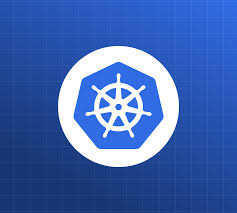Abstract
This is the k8s operator agent usage guide.
Usage Guide#
Path of minimum time sailed#
This is going to be to install Docker Desktop, enable its internal Kubernetes cluster then deploy the agent with skaffold and helm. The remainder of this guide will assume that Docker Desktop has been deployed with the required configuration and that helm and skaffold are available on the user’s system
Skaffold#
The quickest way to get up and running for the purpose of development is to use the ‘dev’ command.
Skaffold Requirements#
Before you do that, you’ll need the following.
Enable Docker access#
When Docker was installed your user may not have been added to the group. Make sure that gets fixed.
sudo usermod -a -G docker $USER
Configure GCP#
Once your user is in the docker group and you’ve restarted your shell,
you can configure GCP.
gcloud auth login
gcloud config set project remote-development-docker
Start up minikube#
Assuming you’re using minikube to simulate a cluster, start it.
minikube start
Build Helm dependencies#
There are some dependencies to build with helm.
cd deployment/helm/k8s-agent
helm repo add redis https://redis-stack.github.io/helm-redis-stack/
helm dependency build
cd ../../../
Ensure PVC availability#
The redis stack requires a persistent volume claim that must be enabled separately from the Skaffold config.
Run Skaffold Dev#
skaffold dev
This will build and run the project for you in the configured Kubernetes cluster then watch for code updates and refresh the running pods for you while you’re developing.
Helpful aliases#
For the sake of saving keystrokes, you may find it helpful to alias helm to ‘h’ and kubectl to ‘k’.
This can be done by updating your .bashrc with the following lines.
alias h='helm'
alias k='kubectl'
If you’d like completion for these aliases, you can run the following commands.
kubectl completion bash > /usr/local/share/bash-completion/completions/kubectl
kubectl completion bash > /usr/local/share/bash-completion/completions/k
helm completion bash > /usr/local/share/bash-completion/completions/helm
helm completion bash > /usr/local/share/bash-completion/completions/h
For the single-character files, you might find it convenient to copy the completions from these locations, h and k
Provisioning for Development#
If you happen to be on an underpowered workstation, you may consider using this Terraform code to deploy a Google Compute Instance with the required resources for building and running the project.
The default configuration of this project is much more powerful than is required to do development on this project and costs almost nothing to run provided that you only run it while you’re using it.
